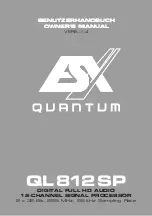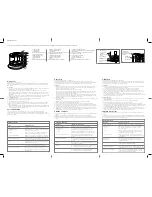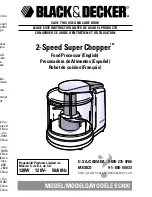
Central Processor Unit (CPU) Registers
Core Configuration
4
-17
12
BRT
0
Bus Release Timing
Selects between fast or slow bus release. If BRT is cleared, a Fast Bus
Release mode is selected (that is, no additional cycles are added to the
access and BB is not guaranteed to be the last Port A pin that is tri-stated
at the end of the access). If BRT is set, a Slow Bus Release mode is
selected (that is, an additional cycle is added to the access, and BB is the
last Port A pin that is tri-stated at the end of the access).
11
TAS
0
TA Synchronize Select
Selects the synchronization method for the input Port A pin—TA (Transfer
Acknowledge). If TAS is cleared, you are responsible for asserting the TA
pin in synchrony with the chip clock, as described in the technical data
sheet. If TAS is set, the TA input pin is synchronized inside the chip, thus
eliminating the need for an off-chip synchronizer. Note that the TAS bit
has no effect when the TA pin is deasserted: you are responsible for
deasserting the TA pin in synchrony with the chip clock, regardless of the
value of TAS.
10
BE
0
Cache Burst Mode Enable
Enables/disables Burst mode in the memory expansion port during an
instruction cache miss. If the bit is cleared, Burst mode is disabled and
only one program word is fetched from the external memory when an
instruction cache miss condition is detected. If the bit is set, Burst mode is
enabled, and up to four program words are fetched from the external
memory when an instruction cache miss is detected.
9–8
CDP[1–0]
11
Core-DMA Priority
Specify the priority of core and DMA accesses to the external bus.
00
Determined by comparing status register CP[1–0] to the
active DMA channel priority
01
DMA accesses have higher priority than core accesses
10
DMA accesses have the same priority as the core accesses
11
DMA accesses have lower priority than the core accesses
7
MS
0
Memory Switch Mode
Allows some internal data memory (X, Y, or both) to become part of the
chip internal Program RAM.
Notes:
1. Program data placed in the Program RAM/Instruction Cache area
changes its placement after the OMR[MS] bit is set (that is, the
Instruction Cache always uses the lowest internal Program RAM
addresses).
2. To ensure proper operation, place six NOP instructions after the
instruction that changes the MS bit.
3. To ensure proper operation, do not set the MS bit while the
Instruction Cache is enabled (SR[CE] bit is set).
Table 4-3. Operating Mode Register (OMR) Bit Definitions (Continued)
Bit Number
Bit Name
Reset Value
Description
Summary of Contents for DSP56303
Page 1: ...DSP56303 User s Manual 24 Bit Digital Signal Processor DSP56303UM AD Revision 1 January 2001 ...
Page 52: ...JTAG OnCE Interface 2 22 DSP56303 User s Manual ...
Page 114: ...General Purpose Input Output GPIO 5 10 DSP56303 User s Manual ...
Page 212: ...GPIO Signals and Registers 8 26 DSP56303 User s Manual ...
Page 268: ...Interrupt Equates A 22 DSP56303 User s Manual ...
Page 306: ...Programming Sheets B 38 DSP56303 User s Manual ...
Page 320: ...Index 14 DSP56303 User s Manual ...
















































